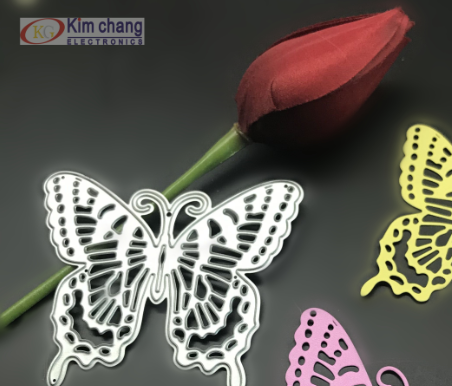
The principle of the paper knife mold is to go through the method of planning to meet the planned product requirements, and how to effectively control the entire process, so that the entire process of etching the die is under control. The principle of the etched die process can also be said to be the principle of embossing die-cutting. To finish the etch die-cutting process, it is obvious that the first thing to be done is to clean the workpiece, and then select the graphic according to the graphic and the shape of the etched surface of the workpiece. The method of copying, the next step is to etch the metal, and the etching method is also diversified, such as immersion etching, splash etching and spray etching. Different etching methods have suitable etching equipment and etching liquid. Because some etching fluids are not suitable for spray etching, and not all workpieces are suitable for spray etching.
2: What kind of information can be used to etch the die, such as using a mixed acid of nitric acid, phosphoric acid, sulfuric acid to etch some of the die steel well;
In the production planning of DIY paper knife mold process, the first problem to be dealt with is what level can be achieved under the existing conditions. For the DIY paper knife model, the following aspects are specific;
a: Surface finish after etching. Under normal circumstances, the surface after etching is required to be smooth and smooth, and the finish after etching is mainly affected by the data grains and the etching system. For example, in aluminum alloy etching, the surface finish after alkaline etching is obviously higher than that after etching with an acidic etching solution composed of ferric chloride and hydrochloric acid. At the same time, participating in the addition of substances in the etching solution can also affect the smoothness of the metal surface.
When understanding the level of etching that can be reached, the DIY etching process cannot be planned at this time, and the customer's requirements must be clarified. This requirement can be planned in a level that can be reached, for example, cannot be properly planned. For example, if these are understood, the planning of the DIY etching die process can be carried out.
Even if you understand the etching principle and method of a certain metal, you may not be able to carry out the DIY paper knife mold. In reality, such things happen from time to time. You know the complete methods and processes of the processing, but the processed products are far from the planning requirements. There is a distance to do. Experience here plays a very important role, for example, only experience, you can not carry out new work, the ability to adapt to new information is not enough, or even can not be done at all; on the contrary, for example, without experience, will not learn at work In the pile up to meet the experience, then the quality of the products you process will be very unstable, and even the processing of qualified products.
b: The accuracy of the graphics. The accuracy of graphics is mainly reflected in the accuracy of image transfer and etching precision. The etching accuracy involves a problem of undercut rate and factors affecting the rate of erosion:
c: Influenced by the data itself and the grain arrangement of the data, in the etching die, the metal corrosion of copper, steel, nickel and other metal materials is small, the etching precision is high, the aluminum and alloy have high side erosion rate and low etching precision. If the same kind of data is coarse, it is obviously not conducive to reaching high-precision graphic etching effect;
d: Also affected by the etching system, it mainly refers to what kind of etchant is used, and of course, it also includes the added substances participating in the solution composed of these etchants. Regarding the etching precision, the effect of increasing the substance is better than that of the etchant. The acid or alkali effect is greater;
